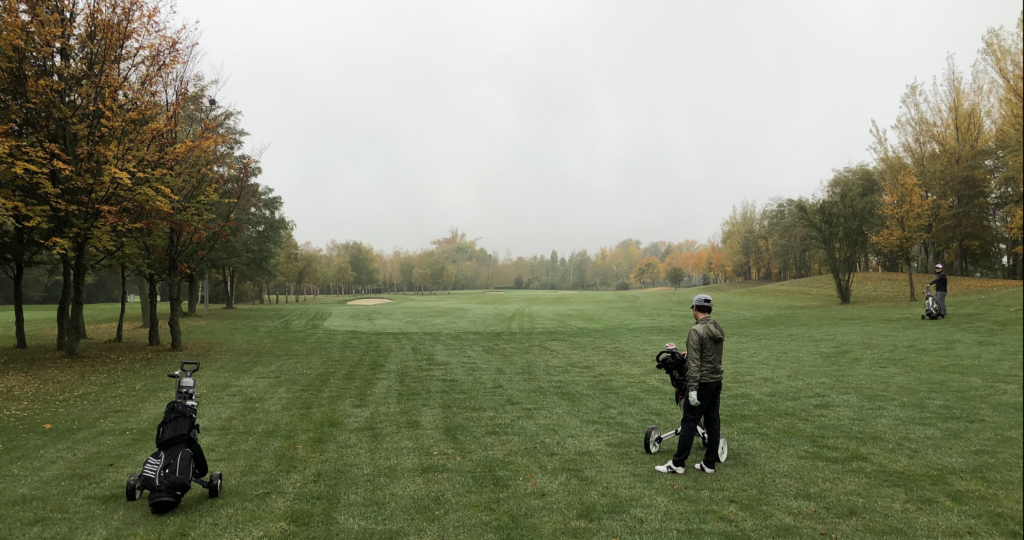In just a week, I’m gearing up for my inaugural golf game of the year. Despite the crunch in my schedule that’s kept me off the practice range, I’m determined to make a commendable showing. This has led me to ponder on the feasible ways to prepare right from the confines of my home. Coupled with this personal ambition, is the universal quest among golf enthusiasts to enhance their game – a pursuit that intriguingly doesn’t always necessitate a visit to the golf course. This realization propels the exploration of a holistic approach, incorporating both physical fitness and mental strategies, tailored to refine one’s golfing prowess indoors. Through a blend of meticulously selected exercises and mental training techniques, this guide endeavors to arm you with the tools necessary for elevating your golf game, ensuring you’re not just ready for the upcoming round but also setting a foundation for continual improvement.

The Importance of Physical Fitness in Golf
Strength, Flexibility, and Stability
Golf requires a surprising amount of physical fitness. Strength, flexibility, and stability are critical not just for power but for preventing injury. We’ll explore exercises targeting these key areas, ensuring you’re in top shape for your next round.
Exercises for Golfers
1. Lower-Body Strength and Stability: Split Squats
Split squats are invaluable for golfers because they mimic the lower body’s movement during a golf swing. They build strength and stability in the legs and hips, which are crucial for generating power. To perform a split squat:
- Stand in a staggered stance with one foot in front of the other.
- Lower your body until the back knee nearly touches the ground, keeping your front knee aligned with your front foot.
- Push through the heel of your front foot to return to the starting position.
- Repeat for several reps before switching legs.
2. Core Strength: Deadbugs
The core is pivotal in connecting the lower body’s power with the upper body’s action during a golf swing. Deadbugs strengthen the core muscles while teaching you to stabilize your spine, improving your swing’s control and power. To perform deadbugs:
- Lie on your back with your arms extended toward the ceiling and your legs raised and bent at 90 degrees.
- Slowly lower your right arm and left leg toward the floor, keeping your back flat.
- Return to the starting position and repeat with the opposite arm and leg.
3. Upper-Body Strength: Push-Ups
Push-ups are a fundamental exercise that strengthens the chest, shoulders, and triceps. For golfers, this means more stability and control in the swing, especially during the downswing and impact with the ball. Standard push-ups are effective, but you can also try variations such as incline or decline push-ups to target different muscle groups.
4. Flexibility and Mobility: Pelvic Rotations
Golf swings require a significant amount of rotational movement, which comes from the hips and pelvis. Pelvic rotations help improve your range of motion and the ability to separate your lower body from your upper body, a key component of an efficient swing. To perform pelvic rotations:
- Stand upright with your feet shoulder-width apart.
- Place a club across your shoulders, holding it at each end.
- Rotate your hips to the right and left while keeping your upper body facing forward.
5. Full Body Turn
A full body turn exercise helps in enhancing your ability to rotate through the swing, increasing your swing speed and power. Using a golf club can assist in extending your rotation further than usual. This exercise not only improves your backswing but also your downswing rotation, leading to more powerful and accurate shots.

Mental Training for First Golf Round
Mental training in golf is as crucial as physical preparation. It encompasses various techniques aimed at enhancing focus, managing stress, and visualizing success on the course. This section delves into the mental practices that can elevate your game, ensuring you’re mentally prepared to tackle the challenges of the golf course.
Visualization Techniques
Visualization is a powerful tool for golfers. It involves imagining yourself executing the perfect golf swing, making successful shots, and playing through the course with confidence and precision. By mentally rehearsing your game, you can improve your muscle memory and mental readiness, leading to better performance on the actual course.
1. Swing Visualization: Picture each phase of your swing in detail. Imagine the grip, stance, backswing, downswing, and follow-through. Feel the motion and the power generated in your swing, and visualize hitting the ball perfectly.
2. Course Visualization: Before playing a round, mentally walk through the course. Visualize playing each hole, focusing on the tee shots, approach shots, and putts. Envision how you’ll navigate challenges like bunkers and water hazards. This practice helps in strategizing your game plan and boosts confidence.
Goal Setting and Positive Self-Talk
Setting realistic and achievable goals for your golf game can motivate you and guide your practice. Pair goal setting with positive self-talk to combat negative thoughts and build a resilient mindset. Affirmations and constructive self-dialogue can enhance your concentration, reduce performance anxiety, and improve your ability to bounce back from mistakes.
Breathing and Relaxation Techniques
Stress and nerves can significantly impact your golf game. Learning to control your breathing and practicing relaxation techniques can help manage these feelings. Techniques such as deep breathing, progressive muscle relaxation, or mindfulness meditation can lower stress levels, improve focus, and maintain a calm demeanor during the game.
Focus and Concentration Drills
Improving your ability to focus and maintain concentration is key in golf. Practice drills that challenge you to stay present and concentrate on specific aspects of your game, like focusing on the target, maintaining awareness of your swing thoughts, or paying attention to the feel of your grip and stance.
Routine Development
Establishing a consistent pre-shot routine helps in anchoring your focus and calming nerves. A routine can include visualizing the shot, taking a set number of practice swings, and using a specific breathing pattern. Consistency in your routine can lead to consistency in your performance.
Implementing Mental Training
Integrate these mental training techniques into your daily practice. Dedicate time for visualization and relaxation exercises, set aside moments for goal setting and positive self-talk, and incorporate focus drills into your routine. Mental training should be a regular part of your golf preparation, just like physical exercises.
By emphasizing both mental and physical aspects of preparation, you can develop a well-rounded approach to improving your golf game. Mental training not only prepares you for the challenges of the game but also enhances your overall enjoyment and satisfaction with your performance.

Conclusion
Improving your golf game is a holistic process that includes physical fitness, mental toughness, and strategic planning. By incorporating these simple at-home exercises and mental training techniques, you’re not just preparing for your next round; you’re investing in a lifelong journey of golf improvement.
- See also : Golf Fitness Routines for Improved Performance
- See also : Course management case studies
- See also : https://www.golfspan.com/practice-golf-at-home
Leave a Reply